Watercolor Pans vs. Tubes (There’s a Clear Winner!)
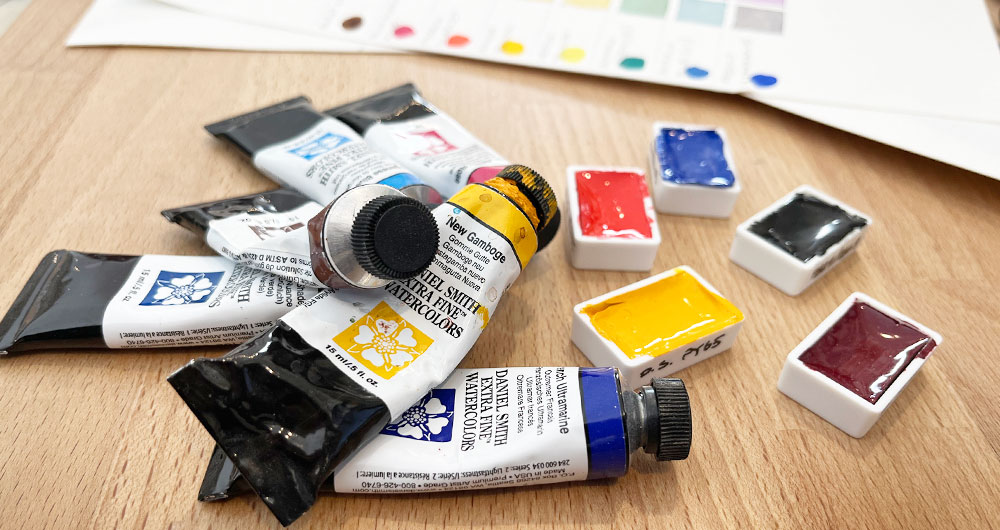
I admit it!
I have a favorite 🙂
You’ve noticed that watercolor paints come in two different forms: tubes or pans.
I’m going to tell you which one I prefer and why…
But which should YOU choose? Is there an advantage to using one rather than the other? What an artistic dilemma!
In this article, I’ll compare these two formats so you can find out what best suits your painting needs.
And ease your bewildered mind…
Pan vs. tube watercolors: So what’s the difference?
Watercolor pans contain solid dry paint, whereas tubes contain a smooth paste of liquid paint. The packaging is different, but the quality of the two formats is the same.
Pans are solid cakes of paint inside little plastic tubs. These are inserted into an empty paintbox or purchased as a set.
Pans are made by pouring watercolor paints into the tubs and leaving them to dry. This process takes many hours (some manufacturers take months). Each time the paint dries, it loses moisture and shrinks. So the pans need to be filled in stages. Up to 3 or 4 pours are necessary to fill the pan.
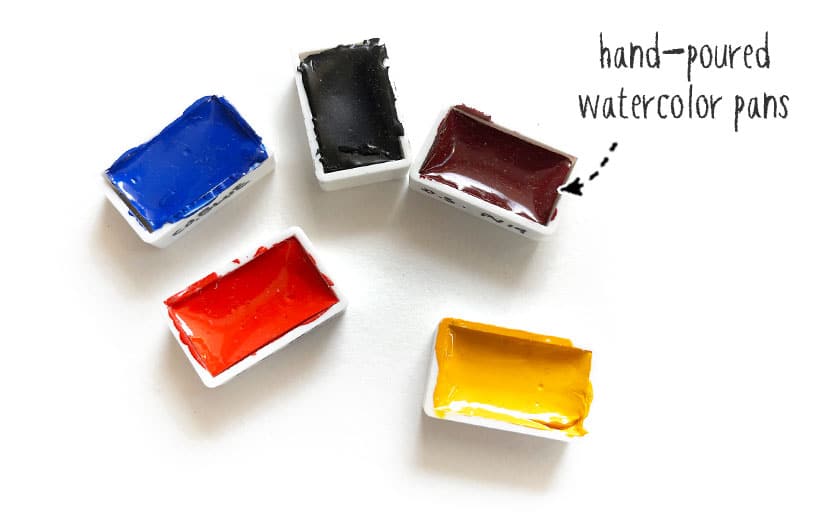
Tubes are filled with liquid watercolor paint that has a consistency like toothpaste. The metallic tubes are sealed with a screw cap to preserve the moisture content.
So tubes have a higher moisture content making them readily available for painting immediately. But the solid cakes of pan paints need to be reactivated with water before use.
Different sizes of tubes are available. The most common sizes are large tubes which contain ½ oz (15ml) of paint, and sometimes smaller tubes containing around 4 to 5ml (0.17 oz). The small tubes can be useful for testing new colors without the expense of buying a full-sized tube.
Pans are sold as full pans or half pans. A full pan has a capacity of about 5ml.
In terms of value for money, you should not compare a large tube to a small pan of watercolors. The composition of the paint is different because tubes have a higher liquid content than cakes. What is essential to consider is the amount of pigment in each.
Hardened watercolor cakes are more highly concentrated in pigments. Watercolor tubes contain more moisture in the form of fillers and water.
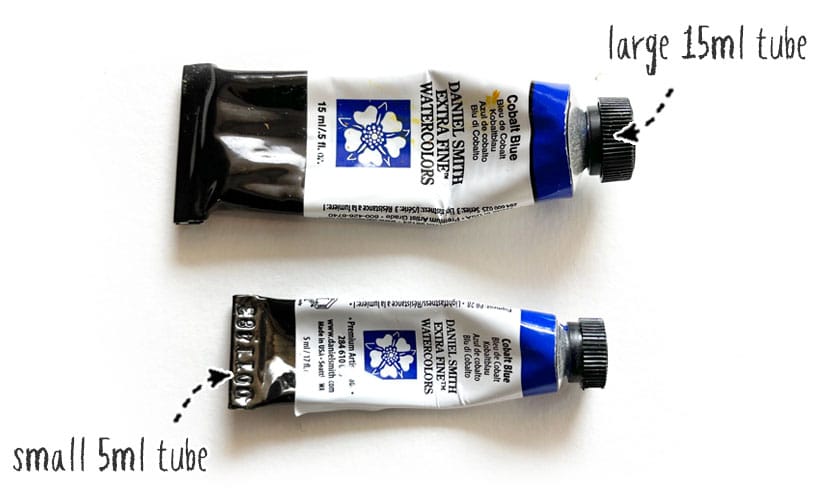
All this is very interesting, but how do you judge which format is more useful?
And from a practical point of view, is one form more convenient than the other?
To answer that, let’s first look at each packaging form’s benefits and shortcomings.
Pros and cons of watercolor paint tubes:
To be honest, I find very few downsides to using tubes and quite a lot of benefits. Here’s what we can sum up about watercolor tubes:
- A more extensive range of colors is available in tubes.
- Liquid color can be used directly from the tube without pre-wetting.
- Easier to mix large quantities of paint for big color washes.
- You can make your own watercolor pans from tubes.
- Tube colors can be squeezed out and left to dry without losing quality.
- In the long run, tubes are probably more economical. You can fill your own pans a couple of times using a single tube.
- Tubes are more challenging to use outside the studio.
- Previously used tubes can be difficult to open if the paint dries around the cap.
Advantages and disadvantages of pans:
On the other hand, pans are more restrictive, with fewer advantages. Here are some of the features of pans:
- Fewer paint colors are available in pans. Individual paint colors in pans can be difficult to find.
- It can be difficult to distinguish different pan colors since the dark-colored dry cakes look very similar.
- It can take more work to mix paints. Dry paints need to be reactivated, and the small size of pans makes lifting color to a mixing palette more challenging.
- Small pans next to each other can lead to color pollution (dirty paints).
- Dry pans need to be reactivated before use.
- But pans are quick and easy to access – you don’t have to spend time squeezing paint.
- Pans in palette boxes are very portable, making them suitable for traveling and Plein air painting.
- Compact and easy to store.
Which is better? Watercolor tubes or pans?
By now, you’ve probably guessed which is my favorite 🙂
I think you’ll prefer to buy tubes over pans for several reasons.
For a start, tubes offer more choices. Not all brands and colors are available in pans. Even within one brand, you’ll usually find more variety of paint colors in tubes than pans.
Also, pans are usually sold in ready-made box sets. This limits your choice of colors because you have to accept the color palette imposed by the manufacturer. Some of them even include white and black paint! You don’t need these!
So the problem is that you don’t get to choose your own colors, which is restrictive. So for a better range of mixing possibilities, it’s best to choose your own colors. And you get the most comprehensive choice in the form of tubes.
Another of the significant advantages of tubes is that you can either work with fresh paint squeezed directly from the tubes or if you want the convenience of a palette, you can simply fill up an empty mixing palette from the tube! Then, you just leave them to dry and reactivate them with water each time you paint.
My personal favorite:
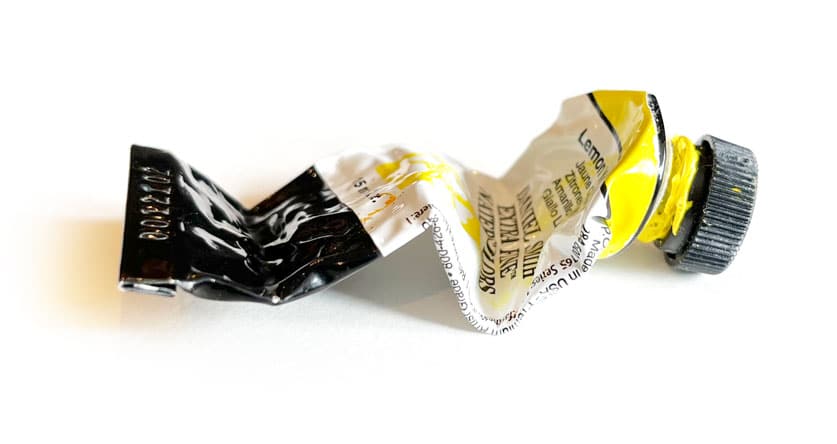
Tubes of watercolor paint are very versatile…
- You can squeeze them into a mixing palette and continue to use them day after day
- You can make your own homemade pans with them
- You can even use them straight from the tube!
Yes, sometimes, for details, I will simply work directly from the tube, lifting a small amount of paint from the tube with a brush.
I prefer tubes over pans, handsdown. But I still use watercolor in pan form!
I use tubes to lay out my mixing palette for studio painting AND for making pans for a palette box.
I paint primarily in my studio. The most convenient way of working is an ample mixing palette with plenty of large paint wells. I use a John Pike palette like this…
You just squeeze tubes of color into each well. It gives me plenty of room to work without cross-polluting colors, and mixing large puddles of paint is easy. Read my guide to find out how to set up a palette like this.
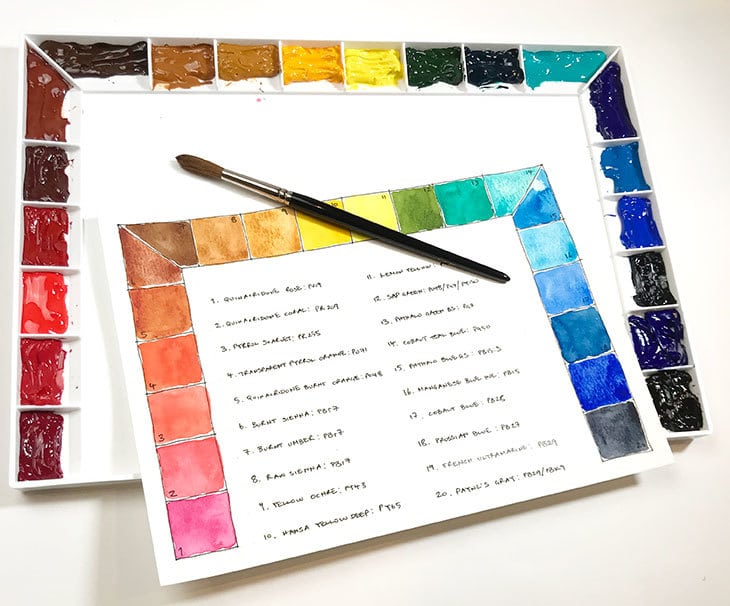
What if I squeeze out too much paint?
Don’t worry! You can squeeze out a large amount of paint into a mixing palette if you like. A lot of watercolorists do this all the time. Of course, the color will dry between painting sessions, but you can reconstitute the paint very quickly with a bit of water next time you need it.
This is also a practical and cost-efficient way to use tubes. Good watercolor paint is expensive. So if you had to throw away the dried paint each time you finish working, it would be extravagant and costly! Also, when you’re working on a project, and you’ve successfully mixed precisely the color you need, trying to match the exact mix you used at a later date is tricky.
Life’s too short for messing around like this!
So leave the paint to dry on your palette. It’s a good idea to cover your palette to prevent dust from contaminating your watercolors (The John Pike palette mentioned above has a lid). You can also find some good leak-proof, airtight palettes. These can make storage between painting sessions a little easier.
Next time you want to paint, just add water to the dried paint. The paint remains water soluble.
It can be handy to have a pipette or spray bottle filled with water for rewetting your paints.
DIY Watercolor Pans using Tubes – Turn tube watercolors into pans
Some artists, like myself, use an empty box set to make their own watercolor “cakes” with paint tubes. You can buy empty pans and paintboxes for this purpose. In my experience, when you add water to homemade watercolor pans, the paint reactivates even more easily than with ready-made commercial pans. It could be because commercially made pans have a very high pigment concentration.
Do most watercolor artists use pans or tubes?
A lot of artists use squeezed-out tubes as dry pan paints.
The rewetting properties are perfectly good between uses. The advantage of doing this is you can create a pan set of your favorite colors, unlike when you buy a pan set that is already full. I recommend you get an empty box set with a big capacity for plenty of pans.
Don’t worry if it looks empty, to begin with – you’ll soon fill it up when you want to try new colors!

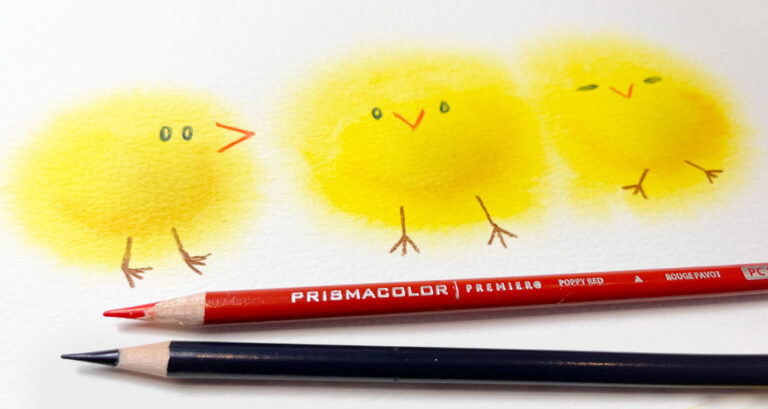
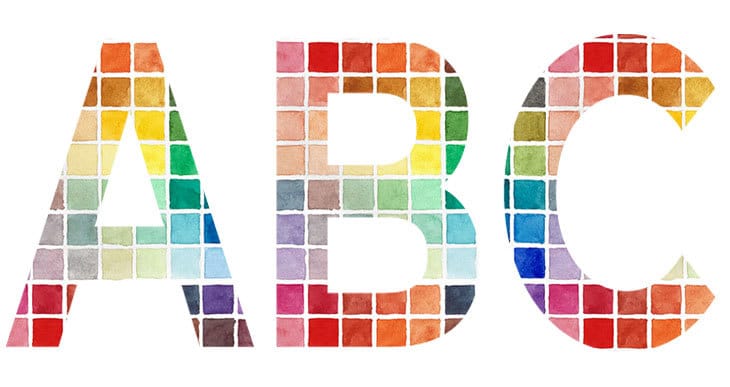
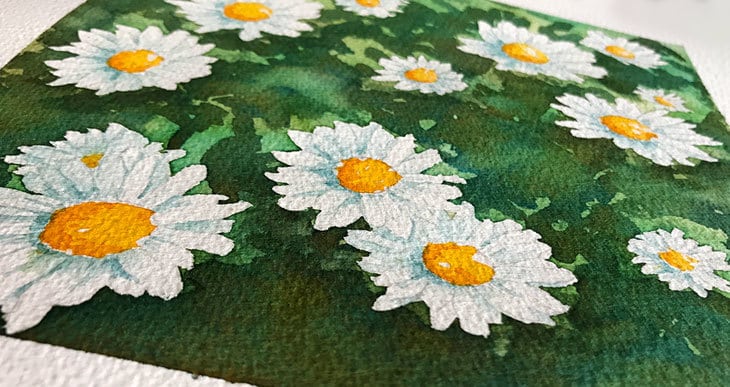
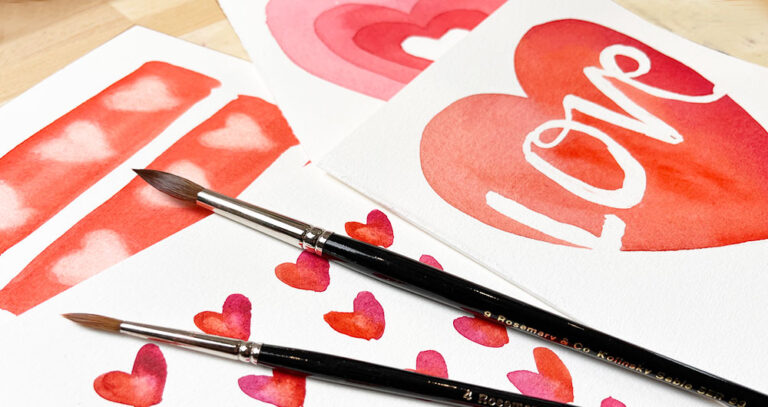
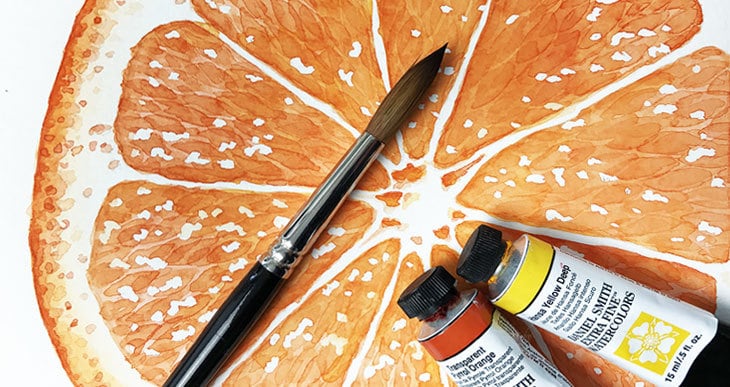
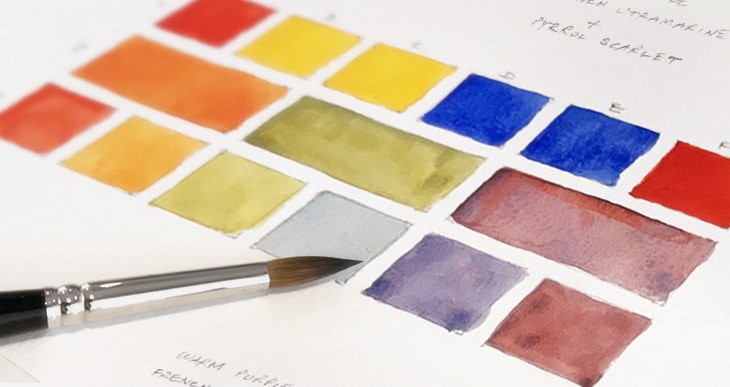
This was helpful, thank you. But why are black and white not needed?
Unlike other mediums, you don’t add white paint when mixing. In watercolor painting, white comes from the paper. You just leave the whiteness of the paper showing through, or dilute the paint more to make them lighter. And black colors can be mixed using the other colors in your palette 🙂
Thank you
Thks for sharing this amazing article I M a begginer and your tips/ explanations are so clear!
Happy to help Ana!
Í have found that tube watercolors can sometimes separate. I found this in a class with tube paints. I prefer pan paints. You can mix the colors and save money by not buying specialty colors.